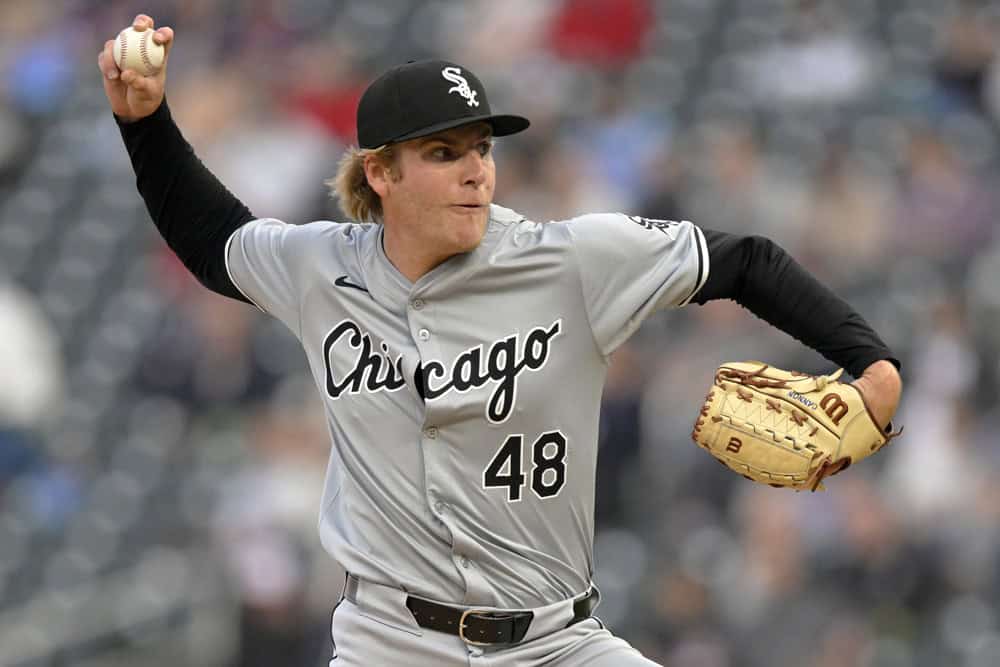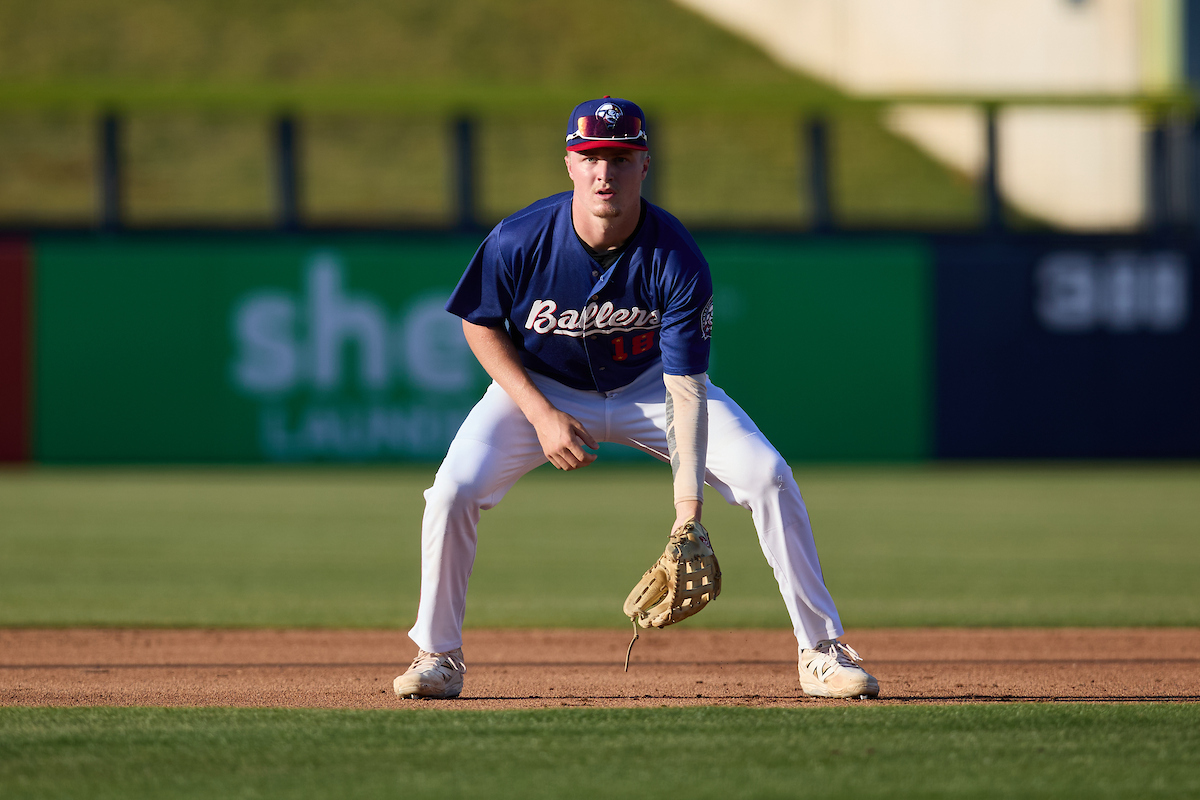He said it when the recorders were off, but the sentiment was pretty clear: Brian Bannister believes rookie right-hander Jonathan Cannon can become one of the better starters in the league. Now that Cannon has allowed just one run in 18 2/3 innings since being recalled from Triple-A two weeks ago, restating his position doesn't feel like putting the White Sox senior advisor to pitching too far out on a limb.
As a third-round pick out of Georgia in 2022, Cannon reliably threw strikes and sat mid-90s out of a six-foot-six frame, and was battle-tested against SEC competition. But the knock on his profile out of college was a lack of reliable bat-missing pitches. And when lefties tuned up Cannon's sinker-heavy attack for a .517/.548/.897 line in his first three major league outings, a lack of reliable weapons stood out.
"He would throw a sinker down and then he would throw a changeup off of that, but the sinker had less [inverted vertical break] than the changeup," said pitching coach Ethan Katz. "So the changeup didn't play the same way, so he got burned on his changeup. Now his changeup he's done a really good job of killing the vert, so it's really working well."
In other words, hitters prepared for Cannon's sinker would occasionally get a changeup that stayed up and hittable for too long and hammer it. With both of those being feel pitches, as Cannon would go so far as to say that his sinker would get better later in the game as he got more tired, adjusting them could be tricky.
Unless the White Sox found a way to make them no longer be feel pitches. Armed with a new grip, Cannon's recent focus has been trusting that his movement has been enhanced, and letting it eat.
"Really just kind of trying to throwing it a little bit harder," Cannon said of his changeup. "Just throw it really hard. That's been the cue for me. The velo has gone up a little bit but I'm seeing a lot better movement on it than a couple weeks ago."
It's a similar path that Cannon's sinker has followed in just a few months time, where now that he's gained comfort with executing it, the velocity has ticked up to 94-95 mph that he's physically capable of, and consciously taking steam off of it is no longer necessary. It might seem counterintuitive, but just throwing every pitch as hard as possible is simpler and more repeatable for this current era of pitchers than thinking about throttling effort pitch-to-pitch.
And Cannon is pretty matter of fact about the other benefits.
"Anyone will tell you that a mistake at 95 mph is less likely to get hit than a mistake at 91 mph," said Cannon, who got clear indications that his arsenal was new and improved when he threw three scoreless innings against the Red Sox the first day he was recalled, and struck out four left-handed hitters. "The put me to the test right away. They pinch hit for [Bobby] Dalbec. Being able to get those guys out--ironically enough the righties in the lineup were the ones that got the hits. But I can live with singles, and as long I'm throwing sinkers I'm going to give up singles and I can work around it."
As someone espousing the principles of a dyed in the wool sinkerballer, Cannon's four-seam metrics are not exceptional that he would gear his game around it. Other than the most important one, that he throws it 96 mph. With an improved changeup that hitters have to be conscious of diving low and away from them, the White Sox feel Cannon can set it up effectively by running 96 mph up and in to left-handers who would otherwise start leaning out over the plate.
"Get to that quadrant and he can make all his money down and away afterward," Katz said. "We've encouraged him to instead of trying to get his cutter to be the perfect pitch up and in like [Erick] Fedde does, use the four-seam. The four-seam is 96 mph, and then use the changeup down and be more selective with his usage, and he's done a really good job with that."
In piling up weak contact against the Astros on Tuesday, we didn't see a tremendous demonstration of this concept. Without Kyle Tucker and Yordan Alvarez, Houston lacked credible left-handed threats, and saw Cannon throw a plurality of sweepers at their right-handed heavy remaining group. And that's a pitch--which the league is batting and slugging a cool .129 against so far--that he worked with Bannister on all the way back in the distant age of spring training.
Which is a good example of why Bannister and Sox pitching development feel so much optimism around Cannon as he throws a crop of pitches, a lot of which have been added or tweaked since February. With bat-missing pitches being the weakness of Cannon's pre-draft profile, he's proven to be a quick and willing study to add stuff to his arsenal and quickly bring them to the level of command that has defined his game.
Some players go years without being able to refine their changeup. Cannon is already touting an upgraded version of what he was throwing in April.
"Extremely smart kid, never misses a sign, never complains about anything," said Pedro Grifol. "He’s here to work, here to learn. Tremendous aptitude. And the willingness to learn. It’s not that easy to come up here, face a little bit of adversity, have some homework, go down there, fix it, adapt, come up here and apply it. That’s not easy to do. And he’s done it, he did it in relief and he did it in his next two outings. This is a special kid, and it’s not just the talent. It’s the makeup, the intangibles, how hungry he is to learn, how he applies, how he receives information."
For what it's worth, Cannon is still not missing a ton of bats. His 20.9 percent strikeout rate is a tick below-average, it's only been a little bit better since being recalled, and he was an out away from recording a four-strikeout complete game. Relying on weak contact in front of the current White Sox defense, in the current White Sox ballpark, in a league built around power is going to produce some rough nights.
But Cannon willingness to adjust is such that he views this year as a more streamlined version of the experimentation with different pitches he was going through last season across two level of the minors. Familiarity with opposing hitters, comfort with the pressure level of the majors, adjusting to the physical workload, and all the softer details of adjusting to the best competition of the world are great, but Cannon is hunting for better stuff.
His early returns have been encouraging.
"The biggest thing is like when your pitches have good movement, you get away with a little bit more," Cannon said after blanking the Astros for 26 outs. "You can get away with bad pitches over the plate that have good movement on them. Sometimes they will get hit but you get away with more when a pitch has a good shape to it. That’s been the biggest thing, trying to adjust some of those pitch shapes. I feel very confident where they are right now."






